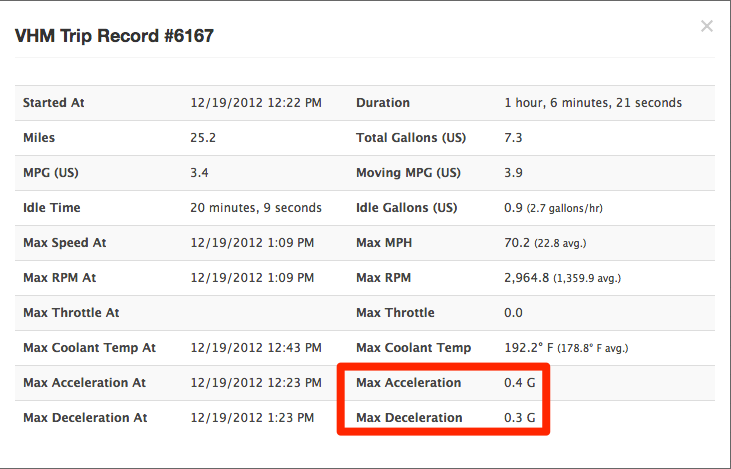
Since adding our Vehicle Health Monitor Integration option to Fleetio, we are finding that our customers have more information to use in their fleet management roles. We want to spotlight this helpful data and provide a clearer picture of how vehicles are being used.
Bad driver behavior can cost your company a lot of money, portray a poor image and potentially lead to accidents. Conversely, well behaved drivers can cut down on fuel consumption and help your vehicles lasting longer.
VHM reports in Fleetio will display Maximum Acceleration and Deceleration numbers to show you how smooth a driver is on the gas and the brake pedals. Results are shown in G-force (relative to gravity).

So you are looking at the report and you see 0.4 G. Is that good or bad? What, you may ask, is the desired range? Where's the happy medium between a top fuel dragster launching (5.3 G) and a barge pulling into port?
According to Progressive Insurance, hard braking is defined as greater than 7 feet per second, or approximately 0.3 G. For the average fleet vehicle, you would like to see both the acceleration and deceleration below 0.3 G. A lower number on takeoff is going to produce better gas mileage and show that your driver is more cautious.
Be sure to also check out the miles per gallon numbers and idle time. Across an entire fleet, gallons per day can really add up wreck your budget. Let all of your vehicle operators know that their habits are easily monitored, and you are sure to see a change in behavior.



